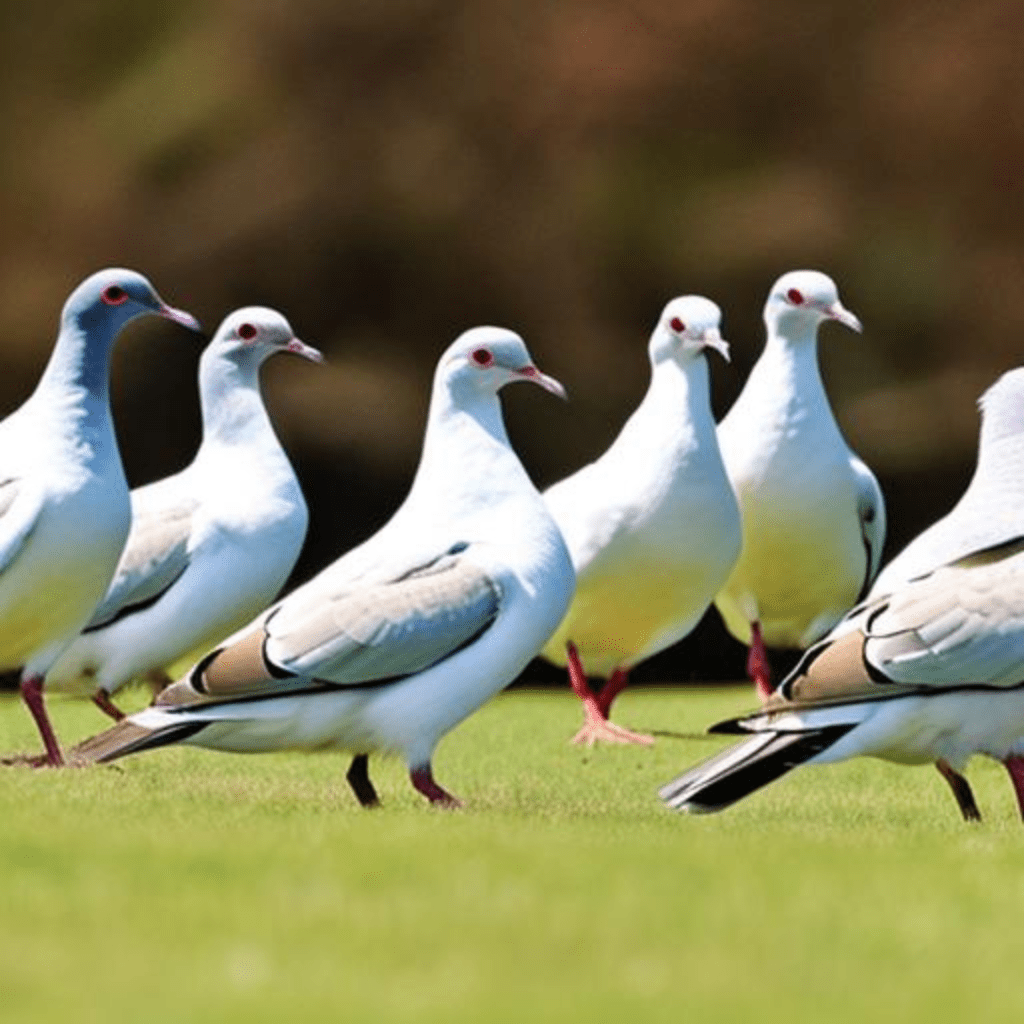As an avid bird watcher, you may have noticed that many animals have unique group names. These names often originate from different languages, literature, or cultural references. In this article, we will be exploring the unique group name for doves and the origin of this name.

The Basics of Dove Group Names:
Before delving into the specifics of the group name for doves, it’s important to understand what a group name is and why they exist. Group names are collective nouns used to describe a group of animals, people, or things. These names help to simplify language and make communication more efficient.
Doves, like many other animals, have unique group names that vary depending on the context and location. In this article, we will be focusing on the common group name for doves, which is a “bevy.”
The Origin of "Bevy":
The origin of the word “bevy” as a group name for doves is unclear. However, there are several theories and stories behind the name. One theory suggests that the name originated from the French word “beau,” which means beautiful. This theory suggests that the name was used to describe the beautiful and graceful movements of a group of doves in flight.
Another theory suggests that the name was derived from the word “beaver” as a reference to the industrious nature of a group of doves. However, there is no concrete evidence to support these theories, and the origin of the name remains a mystery.
Despite the uncertainty surrounding its origin, the term “bevy” has been used for centuries to describe a group of doves. It has become an integral part of the English language and is commonly used in literature, poetry, and everyday conversations.
Other Collective Nouns for Groups of Doves:
- Cote
- Flight
- Dole
- Dule
- Bevy-pot
- Pitying
- Doom
- Drove
- Colony
- Deceit
- Fold
- Leash
- Trip
- Run
- Skein
- Sord
- String
These group names can vary depending on the context and location of the doves. Understanding the different names used to describe groups of animals can help us appreciate the diversity of language and culture, and can also help us better understand and communicate about the natural world around us.
What Is A Pair Of Doves Called?
A pair of doves is called a “duet” or a “couple.” Doves are known for their monogamous behavior and often mate for life. As a result, they are commonly used as a symbol of love and loyalty in literature, art, and culture.
What Are Baby Doves Called?
Baby doves are called “squabs.” These are young birds that have not yet developed the ability to fly. Squabs are fed by their parents for several weeks until they are able to fend for themselves.
What Do You Call A Group of Baby Doves?
A group of baby doves is called a “brood” or a “nest.”
How Many Doves Are In A Bevy?
The number of doves in a bevy can vary depending on the context and location. However, a bevy of doves typically consists of anywhere between 5 to 15 birds.
Do Doves Flock Together In Groups?
Doves are social birds and often flock together in groups. These groups can range in size from a small family unit to a large flock of hundreds or even thousands of birds. Flocking behavior is often seen during feeding or mating seasons when doves congregate in large numbers to find food or a mate.
Do Doves Migrate?
Doves are known for their migratory behavior and often travel long distances to breed or find food. Some species of doves are known to migrate thousands of miles each year, while others may only migrate short distances. The migration patterns of doves often depend on the species, climate, and availability of food.
Conclusion
In conclusion, the group name for doves is a “bevy,” which has been used for centuries to describe a group of these beautiful birds. While the origin of the name remains unclear, it has become an integral part of the English language and is commonly used in literature, poetry, and everyday conversations.
In addition to “bevy,” there are several other group names for doves, each with its own unique origin and context. Understanding the different group names for animals can help us appreciate the diversity of language and culture.
As bird watchers, it’s important to learn about the behavior and characteristics of the birds we observe. Knowing the group names for doves, as well as their migratory behavior and social habits, can help us better understand and appreciate these beautiful birds.
So, next time you see a bevy of doves flying overhead, take a moment to appreciate the beauty of their collective movements and the unique language used to describe them. Happy birding!
James has always been an avid outdoorsman. Since a kid, he kept a journal of all the different birds and species he saw. Now he wants to share his passion with other birders with Happy Birding!
